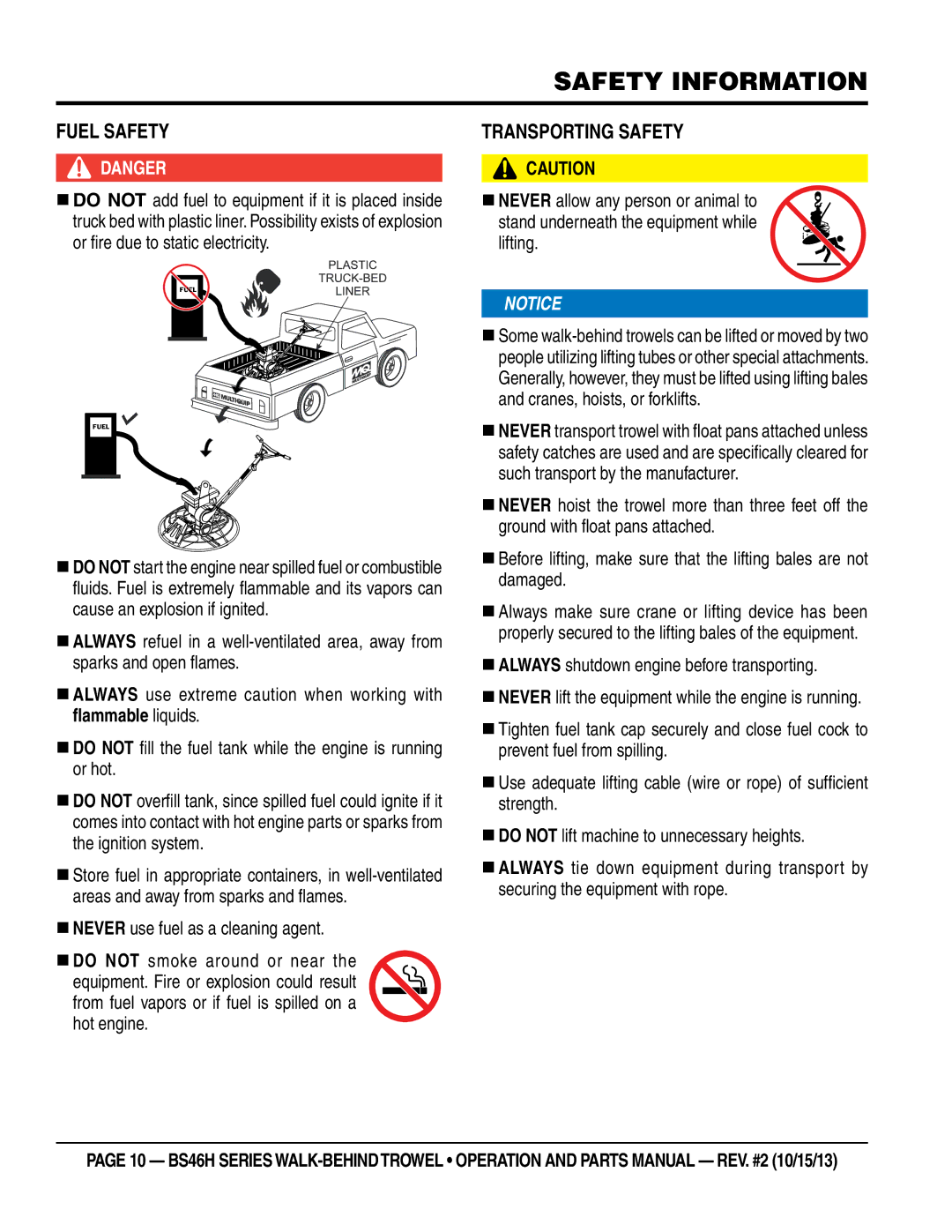
Safety Information
FUeL SaFeTy
![]() daNgEr
daNgEr
DO NOT add fuel to equipment if it is placed inside truck bed with plastic liner. Possibility exists of explosion or fi re due to static electricity.
FUEL
FUEL
dO NOT start the engine near spilled fuel or combustible fl uids. Fuel is extremely fl ammable and its vapors can cause an explosion if ignited.
aLwayS refuel in a
aLwayS use extreme caution when working with flammable liquids.
dO NOT fi ll the fuel tank while the engine is running or hot.
dO NOT overfi ll tank, since spilled fuel could ignite if it comes into contact with hot engine parts or sparks from the ignition system.
Store fuel in appropriate containers, in
NeveR use fuel as a cleaning agent.
dO NOT smoke around or near the equipment. Fire or explosion could result from fuel vapors or if fuel is spilled on a hot engine.
TraNSpOrTiNg SafETy
![]() CaUTION
CaUTION
NeveR allow any person or animal to
stand underneath the equipment while lifting.
![]() NOTICE
NOTICE
Some
NeveR transport trowel with fl oat pans attached unless safety catches are used and are specifi cally cleared for such transport by the manufacturer.
NeveR hoist the trowel more than three feet off the ground with fl oat pans attached.
Before lifting, make sure that the lifting bales are not damaged.
Always make sure crane or lifting device has been properly secured to the lifting bales of the equipment.
aLwayS shutdown engine before transporting.
NeveR lift the equipment while the engine is running.
Tighten fuel tank cap securely and close fuel cock to prevent fuel from spilling.
Use adequate lifting cable (wire or rope) of suffi cient strength.
dO NOT lift machine to unnecessary heights.
aLwayS tie down equipment during transport by securing the equipment with rope.
page 10 — BS46H SERIES
